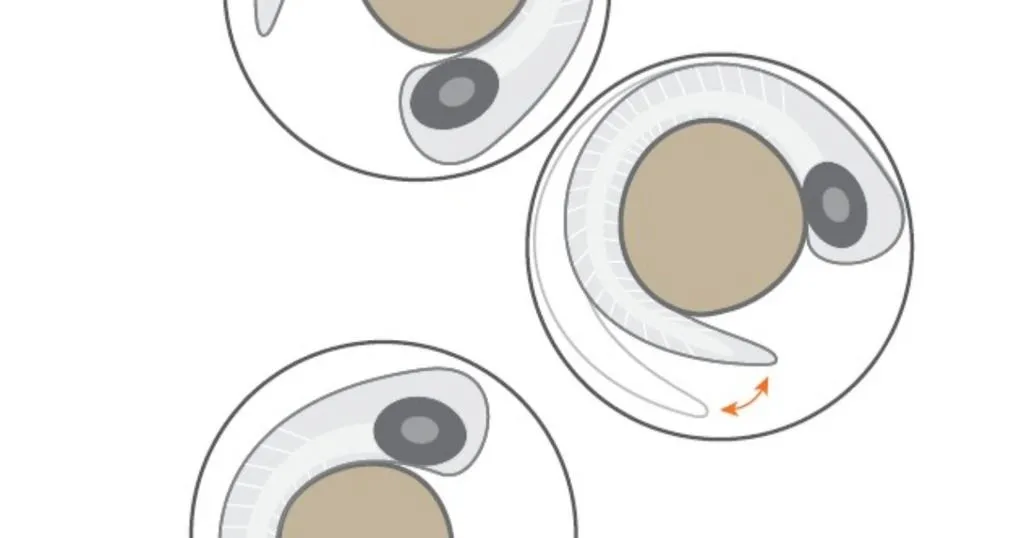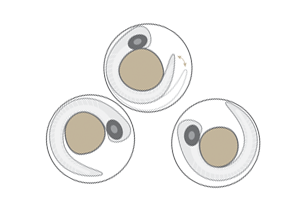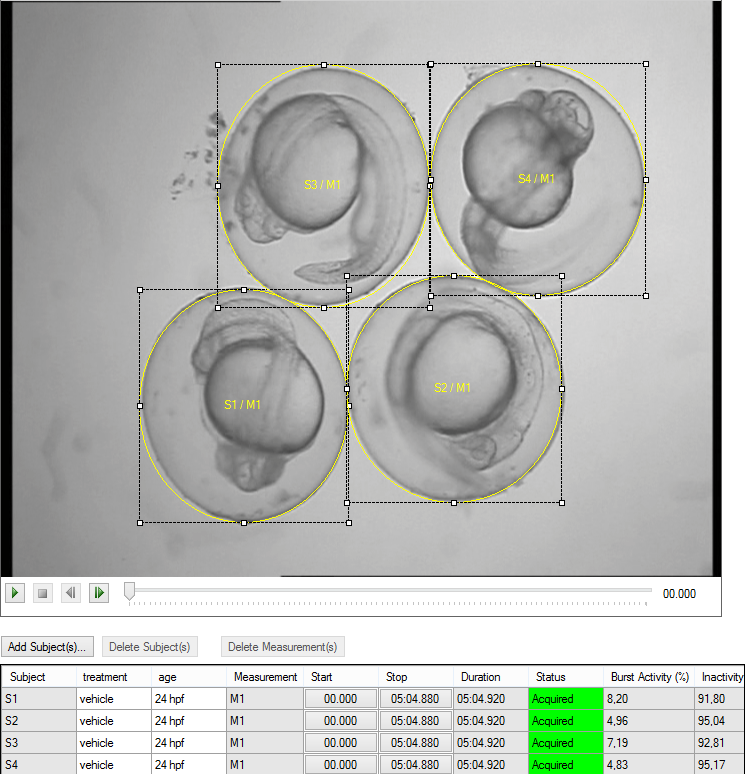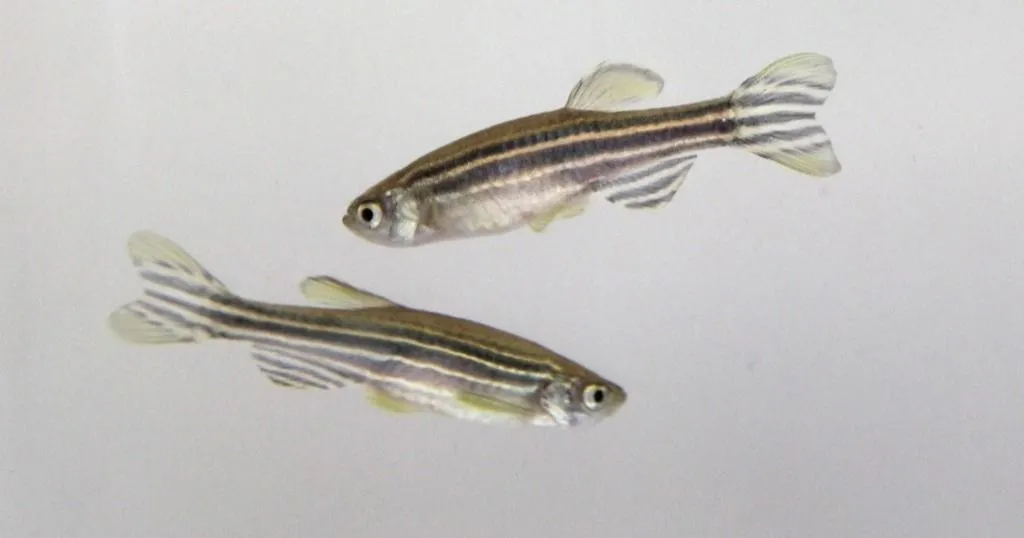Using zebrafish as an early warning system of neurotoxic substances
How can we use a zebrafish (Danio rerio) embryo model to detect possible neurotoxic chemical mixtures that are difficult to detect with normal chemical analyses?
Posted by
Published on
Thu 23 Mar. 2023
Topics
| Danio Rerio | DanioScope | Toxicity | Zebrafish | Ecotoxicology |

Pollution of aquatic environments and the effects on (human) health
Industrial, urban and agricultural activity produce chemical waste that eventually reaches lakes, rivers, oceans and other bodies of water. These aquatic environments are vulnerable to pollution, and many chemical substances may form mixtures that are difficult to detect with normal chemical analyses. Furthermore, these substances and mixtures can exert neurotoxic effects, thus may have neuroactive properties. This is not only harmful for the aquatic ecosystem, but could potentially harm human health as well through drinking water exposure and/or the ingestion of fishery products.
Zebrafish embryos as a research model
To measure this real impact of aquatic (neuro)toxicity, researchers from the Italian National Institute of Health aimed at verifying the feasibility of using a zebrafish (Danio rerio) embryo model.
Zebrafish larvae and embryos make great models for managing ecotoxicity. This model is simple to utilize in the laboratory and is very scalable. This is mainly due to its rapid development, compact size, and transparency. The three Rs of animal testing methods—reduction, replacement, and refinement—are also supported by the use of zebrafish embryos and larvae.
Want to read more about Aquatic eco-neurotoxicology?
Check out this white paper written in collaboration with Prof. Donald Wlodkowic, an expert in eco-neurotoxicology from the RMIT University in Melbourne Australia. Here we dive into the topic of contaminated surface and drinking water, and how we use the latest technology to investigate the neurotoxic and/or neuromodulating effects of these contaminants.
Tail movements as an indicator for neurotoxicity: The Coiling Activity Test
Assessing tail movements (coiling) in zebrafish embryos is a screening technique for developmental neurotoxicity brought on by toxins. These spontaneous tail movements of the zebrafish embryo is an effective readout for eco-neurotoxicological investigations since it can quickly screen for the presence of harmful neurotoxic chemicals in the environment.

Lacchetti et al. evaluated this coiling activity test (CAT) on its efficiency and dependability. Mainly spontaneous tail movements are monitored since this identifies potential neurotoxic effects in water samples. This was compared to the Fish Embryo Acute Toxicity (FET), which is a method more commonly used to pinpoint chemical concentrations in aquatic environments that acutely poison fish. Usually zebrafish embryos are used in the procedure, and are used to identify the concentration at which 50% of the embryos die (i.e., is fatal) after being exposed to a chemical for 96 hours.
What is the benefit of the Coiling Activity Test
The benefits of using the Coiling activity test (CAT) compared to the Fish Embryo Acute Toxicity test (FET) are the very quick screening (it can be performed within 24 hours), but more importantly the CAT does not focus on lethality per sé, but rather on behavioral alterations. This thus emphasizes the possible neuroactive/neurotoxic effects, that can have lifelong and considerable ecological consequences.
Using Noldus’ DanioScope®, a versatile hardware and software combination specifically designed for zebrafish larvae and embryos, videos of the embryos were recorded and analyzed. Burst activity, mean burst duration, and burst count/minute are the three key measuring metrics that DanioScope® evaluates for characterizing the coiling tail movements.
Measuring behavior with DanioScope®
Lachetti et al. presented three different aquatic situations to the zebrafish embryos: standard fresh water (negative control), 1% ethanol and 5% ethanol as references for hyper- and hypoactivity, respectively. Ethanol produces hyperactivity at doses below 2% and hypoactivity at concentrations above 4%. The embryos were incubated in 96-well plates at 26°C in the dark for around 22 hours to bring the embryos to the 23 hpf stage.

Conclusion
A 2018 paper by Legradi et al. [2] estimates that neurotoxic compounds are very likely to be increasingly released into the environment. With a test such as the CAT, Lacchetti et al. demonstrated the test as a valid and rapid early warning system for this presumed neurotoxicity.
In conclusion, the coiling activity test (CAT) as used in this study by Lacchetti et al. is considered a promising, smart and efficient tool due to its sensitivity. The authors do warrant however for harmonization and standardization of its protocols to improve its accuracy and possible future implementation in regulatory guidelines.
References
- Lacchetti, I, Christiano W., di Domenico K., Carere, M., Mancini, L. (2022). Coiling tail activity in zebrafish embryo: a protocol for an early warning system of neurotoxic substances. Fresenius Environ. Bulletin 31(08A/2022):8427-8434
- Legradi, J. B. et al. (2018). An ecotoxicological view on neurotoxicity assessment. Environ. Sci. Eur. 2018 301, 30 (1), 1–34
Related Posts
Tracking tiny transparent fish with EthoVision XT

Zebrafish and withdrawal

